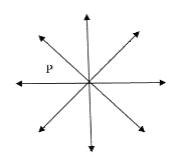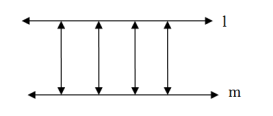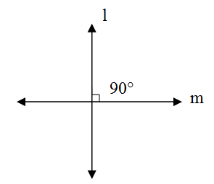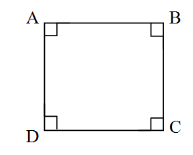NCERT Solutions for Maths Class 9 Chapter 5 Exercise 5.1 - FREE PDF Download
FAQs on NCERT Solutions for Class 9 Maths Chapter 5 Introduction To Euclid'S Geometry Ex 5.1
1. What are parallel lines and perpendicular lines?
Parallel lines are a set of lines (two or more) on a plane that never meets. These lines do not intersect each other and are always at the same distance apart from each other. Perpendicular lines are lines that are at right angles to each other. If certain lines intersect each other in a plane at right angles, the lines are said to be perpendicular to each other. Students will be able to clearly understand the definitions of parallel lines and perpendicular lines by solving the 5th chapter of Class 9 Mathematics.
2. Where Can I find solved Exercise 5.1 of Class 9 Maths Chapter 5 Introduction to Euclid’s Geometry?
Vedantu caters to NCERT Solutions for Class 9 Maths Chapter 5 Introduction to Euclid’s Geometry. Vedantu is an e-learning platform known to provide accurate NCERT Solutions to help students in clarifying their doubts. Class 9 Maths NCERT Solutions for Chapter 5 (Exercise 5.1) can be availed online or downloaded from Vedantu’s site. Vedantu provides a free PDF download of the solutions which include stepwise solutions to the exercise questions. These solutions are provided by subject matter experts and are designed as per the latest NCERT guidelines and syllabus.
3. Why should I refer to NCERT Solutions for Class 9 Maths Chapter 5 Introduction to Euclid’s Geometry Exercise 5.1?
NCERT Solutions for Class 9 Maths Chapter 5 Introduction to Euclid’s Geometry is designed by Vedantu to ensure complete coverage of the exercise questions. These solutions are prepared by expert teachers as per the latest NCERT guidelines. Students must download it as it will allow them to solve the chapter effectively. All the important tips and tricks are given to solve the problems of the exercise. NCERT Solutions for Class 9 Maths for Chapter 5 Exercise 5.1 as well as other exercises are a great resource to score well in the Maths exam.
4. How to utilize NCERT Solutions for Class 9 Chapter 5 Introduction to Euclid’s Geometry to score well?
Students can go through exercise-wise NCERT Solutions for Class 9 Maths Chapter 5 as well as other chapters available on Vedantu. This will improve their understanding of the chapter. Students must try to solve all the problems given in the exercise and refer to the solutions in case of any doubts. This will save their time which students can utilize in the revision of the chapter. Students can also register for online interactive classes provided by experts at Vedantu and can learn all the necessary tips to score well in the exam.
5. What are Euclid's important axioms?
Euclid’s theorems remain the most important theorems in mathematics. The most important Euclid’s axioms are -
The whole is equal if the equals are added with equals.
The whole is always greater than the past.
The remainder is equals if the equals are subtracted from equals.
Many more of these important axioms are explained in the NCERT Solutions provided by Vedantu. These solutions help students solve questions given in the chapter Euclid’s Geometry.
6. How many questions do the exercise on Euclid’s Geometry dispense?
There are a total of seven questions that this exercise offers, ranging from problem-solving questions to the understanding of basic concepts of Geometry. For instance, questions based on understanding the difference between parallel lines, perpendicular lines, line segments, planes etc are given in this exercise. These exercises have detailed descriptions and answers. Students can get a better and easy understanding of the concepts by referring to these solutions provided by Vedantu.
7. What are the five postulates of Euclid’s Geometry?
There are five important postulates of Euclid’s Geometry. These postulates of Euclid’s Geometry include -
A straight line is usually drawn from one point to any other point.
Any centre and radius can be used to draw a circle.
All right angles are always equal.
A terminated line can be constructed indefinitely.
If a straight line falls on two straight lines and the interior angles of both sides of it taken together are less than two right angles, the two straight lines produced indefinitely meet on that side where the sum of angles is less than two right angles.
8. Why are NCERT Solutions for Chapter 5 “Euclid’s Geometry” of Class 9 preferable?
Vedantu’s NCERT Solutions are designed by subject matter experts. These solutions serve the curiosity of students and help clear doubts and confusions that may arise while solving the exercise. This is filled by the detailed explanations and answers that are given with each question, leaving no space for doubt in the student’s mind. Moreover, these questions are designed following the pattern of the CBSE curriculum exclusively, which explains the importance that is placed on procuring the most fundamental ideas before jumping into complex questions.
9. Why are practice questions important to score marks?
To score satisfactory marks in any examination, students need to have extensive practice in their field of study. This is because practice enhances one’s retaining powers that will help them in solving these questions quickly and effectively in exams. Moreover, it also enhances the existing skills and knowledge of the student. The NCERT Solutions are one such resource that a student can always turn to for the practice and understanding of the topics in their syllabus. These Solutions have numerous exercises that the student can work on to get a better grasp of the topic. To add the cherry on top, these exercises have detailed and explanatory answers helping students in every step of their learning and they are available at free of cost on the Vedantu website and on the Vedantu app.
10. What topics are covered in Class 9 Ch 5 Maths Ex 5.1?
Exercise 5.1 focuses on establishing a strong foundation in fundamental Euclidean geometry concepts. Here's a breakdown:
Identifying Basic Elements: Recognizing points, lines, and planes, the building blocks of geometry.
Understanding True/False Statements: Analyzing statements related to geometric properties and determining their validity (true or false).
Applying Geometric Definitions: Using precise definitions of terms like angles, rays, segments, and perpendicular lines to solve problems.
11. What is the focus of Introduction to Euclid's Geometry in Class 9th Maths Chapter 5 Exercise 5.1 Solution?
In class 9th maths chapter 5 exercise 5.1 solution focuses on the foundational concepts and principles of geometry introduced by Euclid. This includes basic definitions, axioms, and postulates that form the basis for geometric reasoning and proofs.
12. What are Euclid's definitions, and why are they important in Class 9 Maths Chapter 5 Exercise 5.1 Solutions?
In Class 9 Maths Ex 5.1 Euclid's definitions provide the basic terminology for geometric concepts, such as points, lines, line segments, rays, and planes. These definitions are essential for understanding and solving geometric problems.
13. How does Ex 5.1 Class 9 help in understanding Euclid's Geometry?
Class 9 Maths Chapter 5 Exercise 5.1 Solutions includes questions that test the comprehension of basic definitions, axioms, and postulates introduced by Euclid. It helps students understand and apply these fundamental concepts through various problems and examples.












































